Ivy, scientifically known as Hedera, is a genus of climbing and creeping evergreen plants within the Araliaceae family. With approximately 12-15 species, ivy plants are found across different regions worldwide, including North Africa, Europe, Nepal, Macaronesia, and East Asia.
They are highly valued for their ornamental value and ability to cover walls, fences, and structures, or serve as ground covers in gardens. These versatile plants have distinct climbing abilities.

Ivy species like English Ivy (Hedera helix) originated in Europe, while others like Azores Ivy (Hedera azorica) are native to the Azores, Himalayan Ivy (Hedera nepalensis) to Nepal, and Japanese Ivy (Hedera rhombea) to East Asia. Each species offers unique characteristics and thrives in specific growing conditions, adapting to their native habitats.
Ivy's adaptability, evergreen foliage, and aesthetic appeal have made it popular among gardeners and plant enthusiasts worldwide. Whether used indoors or outdoors, ivy plants bring a touch of natural beauty and greenery.
How Do I Identify an Ivy Plant?
Ivy plants have several distinguishing features that set them apart from other plants. One of the most notable characteristics of ivy is its lobed leaves. These leaves can vary in size, shape, and color, offering a range of unique identifiers for different ivy species.
When identifying ivy plants, closely examining the leaves is crucial. English Ivy has dark green lobed leaves with prominent veins, while Algerian Ivy showcases large, glossy leaves with elongated shapes and three to five lobes.
Irish Ivy stands out with its large, glossy dark green leaves that have five or more lobes, and Japanese Ivy features small, narrow leaves that are sharply pointed. Taking note of these leaf characteristics, along with observing the overall growth pattern and any flowers or fruits produced by the plant, can provide valuable clues for identifying different ivy species.
Let’s take a look at 15 of the most popular and identifiable ivy plants that you may consider planting in your garden or container display.
Algerian Ivy
At a Glance
Botanical Name: Hedera algeriensis
Color: Dark green
Growing Zone: 7-10
Type: Climbing

Identifying Algerian ivy
Algerian Ivy (Hedera algeriensis) is an evergreen ivy species native to the Mediterranean region. It is primarily grown as a climbing vine but can also be used as a ground cover or trailing plant. The large, glossy, dark green leaves have a distinctive five-lobed shape.
Algerian Ivy can reach heights of up to 50 feet (15 meters) when allowed to climb. It thrives in partial shade to full sun and is known for its ability to tolerate hotter and drier conditions compared to other ivy species, but can suffer in
Irish Ivy
At a Glance
Botanical Name: Hedera hibernica
Color: Dark green
Growing Zone: 5-9
Type: Climbing

Identifying Irish Ivy
Irish Ivy (Hedera hibernica) is an evergreen ivy species native to Ireland and Western Europe. It is primarily grown as a climbing vine and is known for its large, glossy, dark green leaves that have five or more lobes.
Irish Ivy can reach considerable heights when allowed to climb structures or trees. It thrives in growing zones 5-9 and prefers partial shade to full sun. Irish Ivy is a versatile plant that can be used outdoors for covering walls or as a ground cover. It is also suitable for indoor cultivation as a trailing plant. Regular pruning is necessary to maintain its desired shape and prevent excessive growth.
Japanese Ivy
At a Glance
Botanical Name: Hedera rhombea
Color: Medium green
Growing Zone: 7-10
Type: Climbing
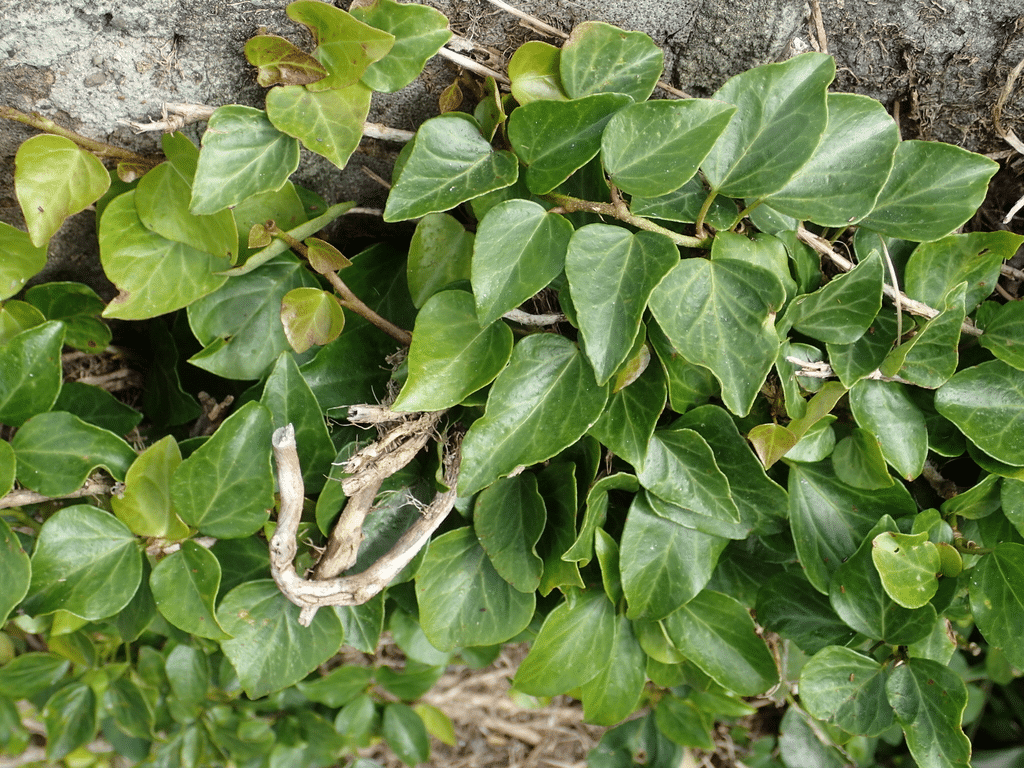
Identifying Japanese Ivy
Japanese Ivy (Hedera rhombea) is an evergreen ivy species native to East Asia. It is primarily grown as a climbing vine and is characterized by its small, narrow leaves that are sharply pointed. The leaves of Japanese Ivy are green in color and grow alternately along the vines. It can reach moderate heights when allowed to climb structures or trees.
Himalayan Ivy
At a Glance
Botanical Name: Hedera nepaensie
Color: Green
Growing Zone: 6-9
Type: Climbing
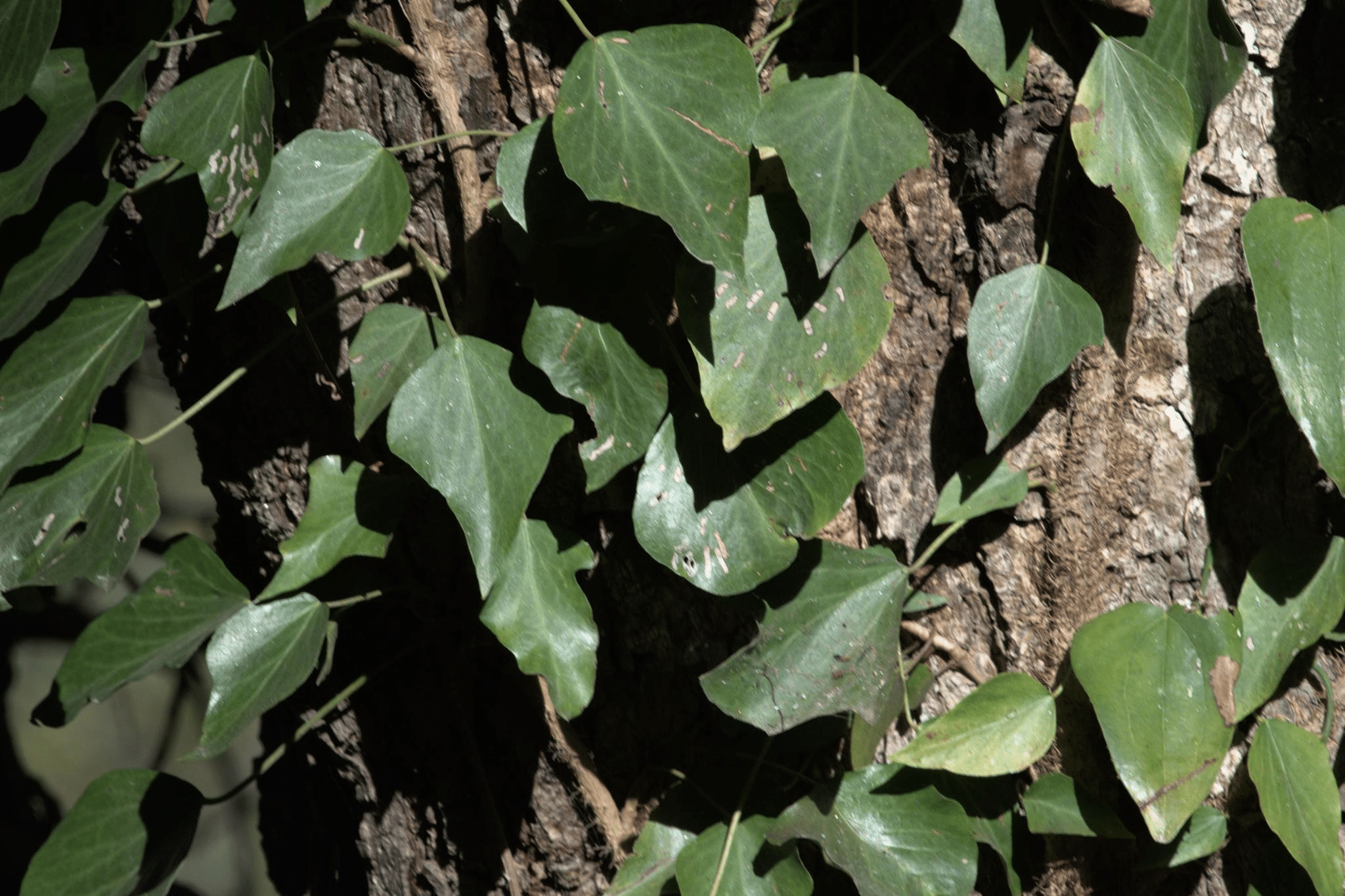
Identifying Himalayan Ivy
Himalayan Ivy (Hedera nepalensis) is an evergreen ivy species native to the Himalayan region. It is primarily grown as a climbing vine and is known for its green leaves that vary in size and shape. The leaves of Himalayan Ivy can be either lobed or unlobed, depending on the specific variety. It can reach moderate heights when allowed to climb structures or trees.
Himalayan Ivy thrives in growing zones 6-9 and prefers partial shade to full sun. It is commonly used outdoors as a climbing plant or ground cover. With proper care, it can also be grown indoors as a trailing plant. Regular pruning helps maintain its desired shape and prevent overgrowth.
Persian Ivy
At a Glance
Botanical Name: Hedera colchica
Color: Dark green
Growing Zone: 6-9
Type: Climbing
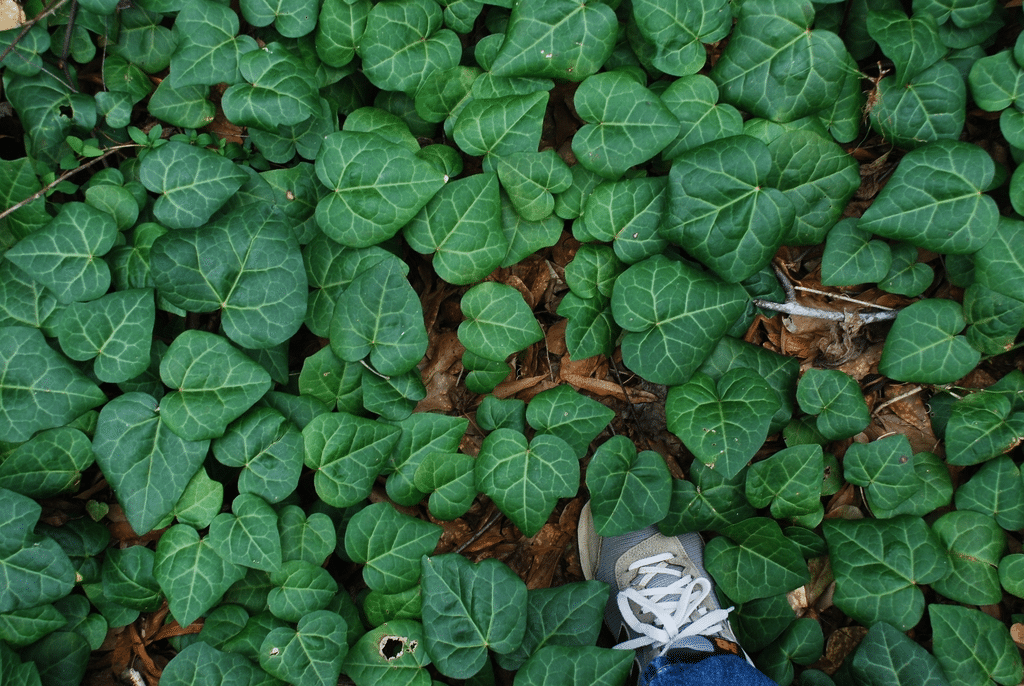
Identifying Persian Ivy
Persian Ivy (Hedera colchica) is an evergreen ivy species native to the Caucasus region. It is primarily grown as a climbing vine and is known for its large, dark green leaves. The leaves of Persian Ivy are typically heart-shaped with three to five lobes. It can reach impressive heights when allowed to climb structures or trees.
Persian Ivy thrives in growing zones 6-9 and prefers partial shade to full sun. It is commonly used outdoors as a climbing plant, ground cover, or to create a dense foliage backdrop. It can also be grown indoors as a trailing plant.
Duckfoot Ivy
At a Glance
Botanical Name: Hedera helix ‘Duckfoot'
Color: Green
Growing Zone: 5-9
Type: Groundcover, self-branching
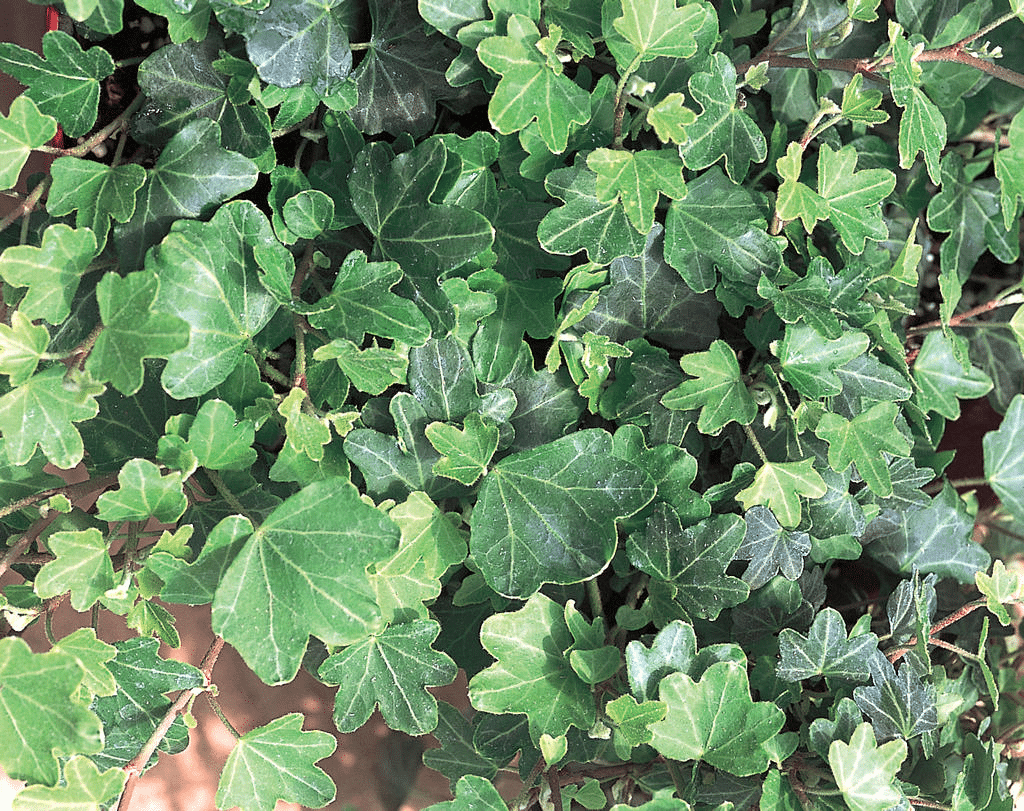
Identifying Duckfoot Ivy
Duckfoot Ivy (Hedera helix ‘Duckfoot') is a unique evergreen ivy cultivar known for its distinctive leaf shape. The leaves of Duckfoot Ivy resemble the foot of a duck, hence the name. Instead of the typical lobed leaves, they have rounded, fan-like lobes that give them a distinct appearance.
This ivy variety is primarily grown as a ground cover, forming a dense mat of foliage. It has a trailing growth habit, making it suitable for cascading over walls or in hanging baskets. Duckfoot Ivy thrives in growing zones 5-9 and prefers partial shade to full sun. It is a popular choice for indoor cultivation as well, adding an interesting texture to indoor gardens or as a trailing plant.
Buttercup Ivy
At a Glance
Botanical Name: Hedera helix ‘Buttercup’
Color: Bright yellow-green
Growing Zone: 4-9
Type: Climbing
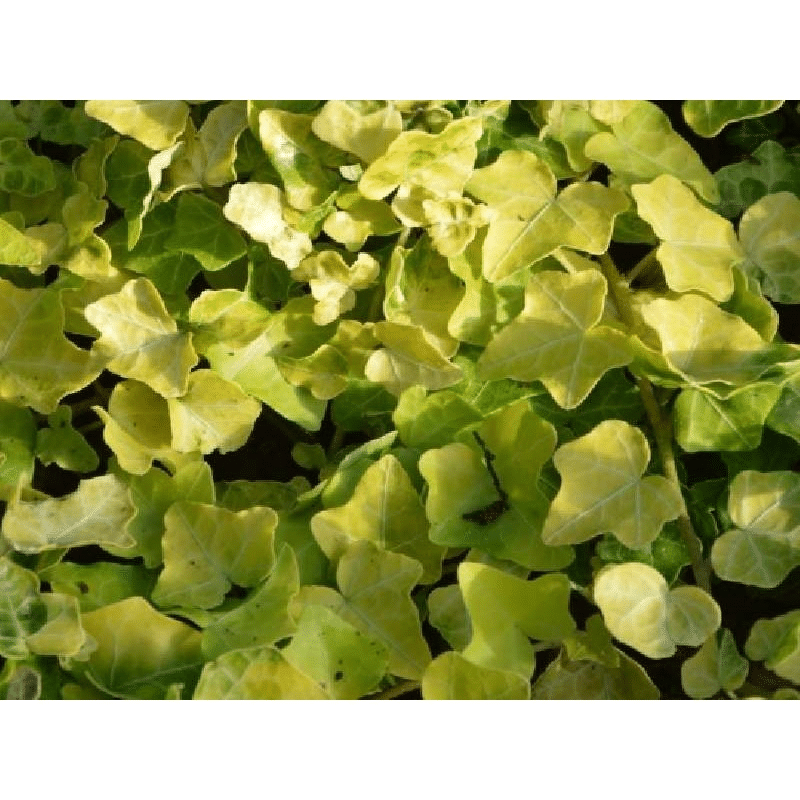
Identifying Buttercup Ivy
Hedera helix ‘Buttercup' is a cultivar of the evergreen ivy species commonly known as English Ivy. It is named ‘Buttercup' due to the bright yellow-green color of its leaves, which add a vibrant touch to gardens and indoor spaces. This ivy variety has the same lobed leaf shape as the species, but with the added feature of its eye-catching color.
Hedera helix ‘Buttercup' is primarily grown as a climbing vine but can also be used as a ground cover. It thrives in growing zones 4-9 and prefers partial shade to full sun.
Shamrock Ivy
At a Glance
Botanical Name: Hedera helix ’Shamrock’
Color: Green
Growing Zone: 4-9
Type: Ground cover
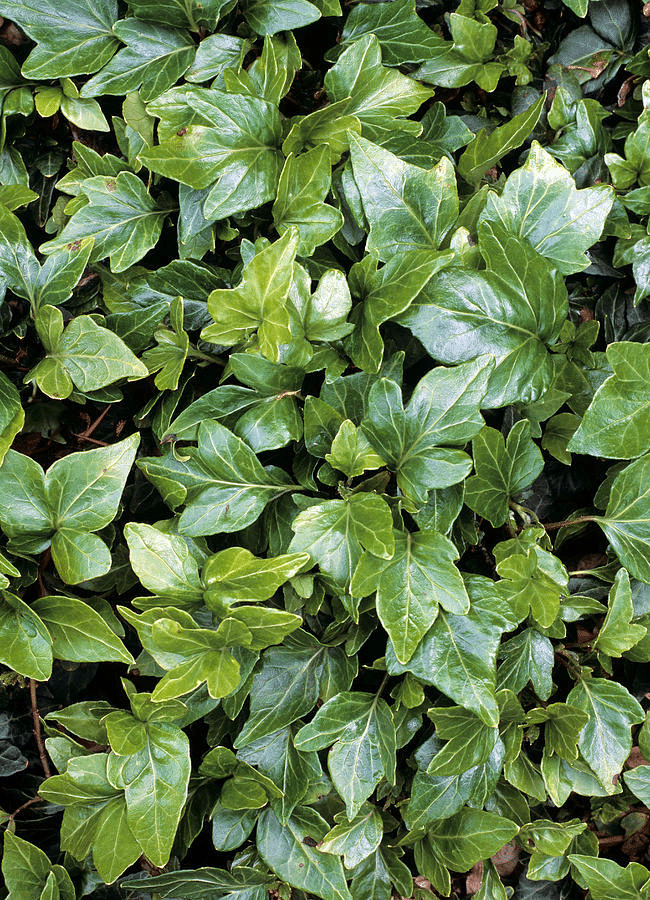
Identifying Shamrock Ivy
Shamrock Ivy (Hedera helix ‘Shamrock') is a cultivar of the evergreen ivy species Hedera helix. It gets its name from the shape of its leaves, which resemble shamrock leaves, with three lobes. The leaves of Shamrock Ivy are deep green in color and have a glossy texture. This ivy variety is primarily grown as a ground cover or in hanging baskets, where its trailing growth habit adds a cascading effect.
Shamrock Ivy thrives in growing zones 4-9 and prefers partial shade to full sun. It is well-suited for both indoor and outdoor cultivation. Shamrock Ivy is a popular choice for adding greenery to shaded areas or for creating a lush carpet-like effect in gardens and landscapes.
Manda’s Crested Ivy
At a Glance
Botanical Name: Hedera helix
Color: Dark Green
Growing Zone: 5-9
Type: Climbing
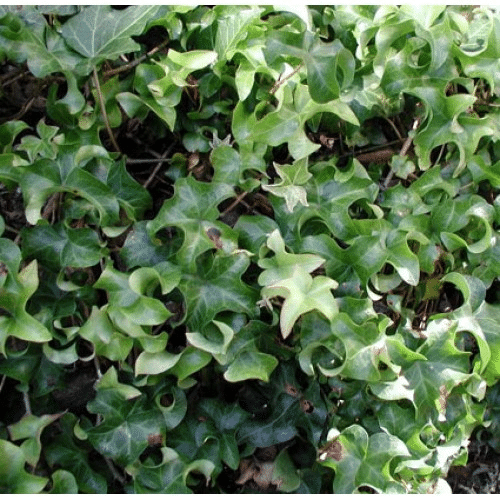
Identifying Manda’s Crested Ivy
Manda's Crested Ivy (Hedera helix ‘Manda's Crested') is a unique cultivar of the evergreen ivy species Hedera helix. It is named after Manda's Nursery, where it was first discovered. This ivy variety stands out for its highly ornamental and distinctive foliage. The leaves of Manda's Crested Ivy have unusual, wavy margins and irregularly crested or ruffled edges, dark green with a touch of bronze in the winter.
Manda's Crested Ivy is primarily grown as a climbing vine or in hanging baskets, where its unusual leaf shape adds visual interest.
Azores Ivy
At a Glance
Botanical Name: Hedera azorica
Color: Green
Growing Zone: 9-11
Type: Climbing
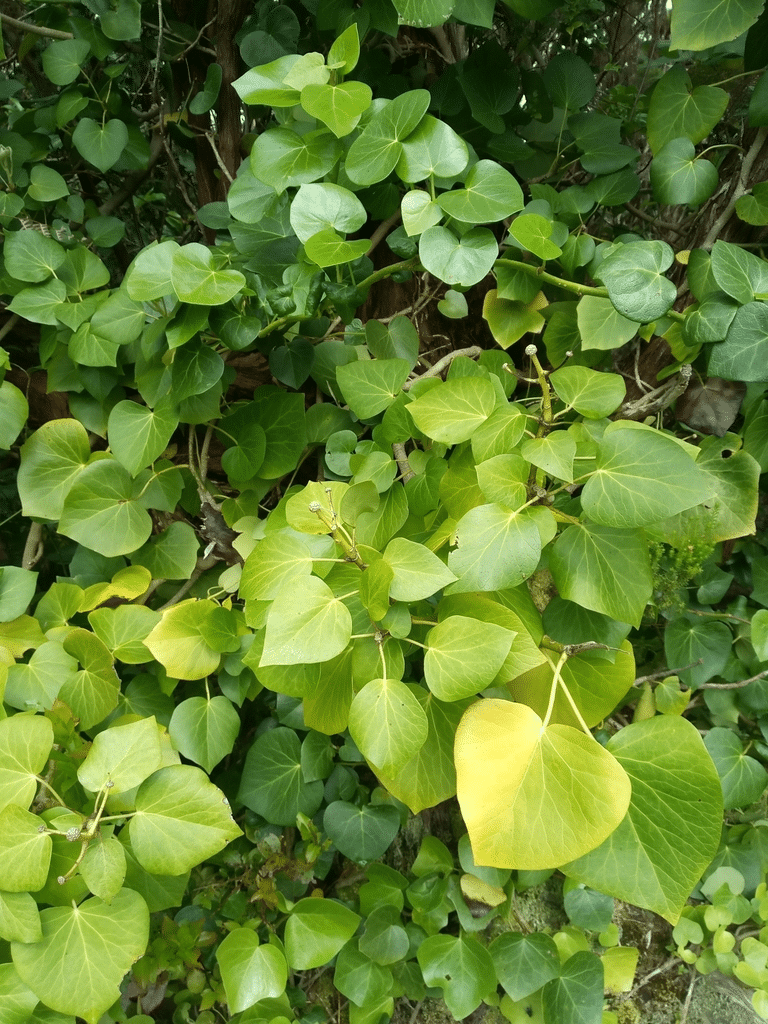
Identifying Azores Ivy
Azores Ivy (Hedera azorica) is an evergreen ivy species native to the Azores, a group of islands in the Atlantic Ocean. It is a climbing vine that is highly valued for its ornamental foliage. The leaves of Azores Ivy are dark green and typically have three to five lobes. They have a glossy texture and can grow to be quite large. This ivy species is known for its vigorous growth and ability to cover walls and structures.
English Ivy
At a Glance
Botanical Name: Hedera helix
Color: Dark green
Growing Zone: 4-9
Type: Climbing

Identifying English Ivy
English Ivy (Hedera helix) is a popular evergreen ivy species known for its climbing and trailing growth habit. It is native to Europe and Western Asia but has become naturalized in various regions worldwide. English Ivy has dark green, lobed leaves with prominent veins, which provide a dense and lush appearance.
It can climb vertically, covering walls, fences, and arbors, or spread horizontally as a ground cover. This ivy species is adaptable and can grow in a wide range of conditions, from full sun to shade. It is often used for erosion control and adds a touch of greenery to landscapes.
English Ivy is also a favorite choice for indoor cultivation as a trailing houseplant. Regular pruning is necessary to prevent overgrowth and maintain desired size and shape. However, it's important to note that English Ivy can be invasive in some regions, so proper management is required.
German Ivy
At a Glance
Botanical Name: Delairea odorata
Color: Green
Growing Zone: 9-11
Type: Climbing
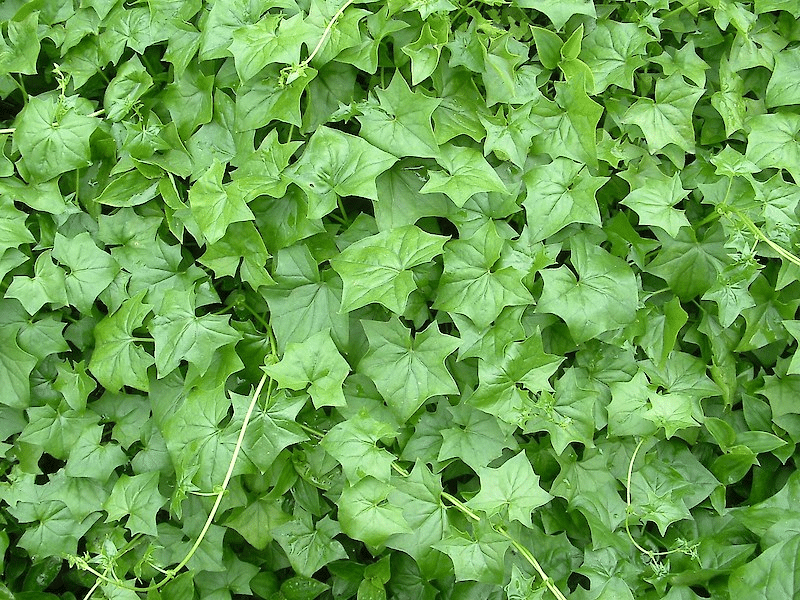
Identifying German Ivy
German Ivy (Delairea odorata), also known as Cape Ivy or Parlor Ivy, is a fast-growing trailing vine native to South Africa. Despite its common name, it is not a true ivy but rather a member of the daisy family (Asteraceae).
German Ivy features lush, dark green leaves that are somewhat fleshy and glossy in texture. The leaves are typically three-lobed, resembling the shape of a maple leaf. This ivy-like plant is often cultivated as a houseplant or outdoor ground cover. It thrives in both full sun and partial shade and is known for its vigorous growth, quickly covering large areas.
German Ivy is appreciated for its ability to cascade from hanging baskets or spill over walls, adding a touch of greenery and texture to gardens and indoor spaces. It is a low-maintenance plant that requires regular watering and occasional pruning to keep its growth in check.
Gloire de Marengo Ivy
At a Glance
Botanical Name: Hedera algerienis
Color: Variegated green and white
Growing Zone: 7-10
Type: Climbing
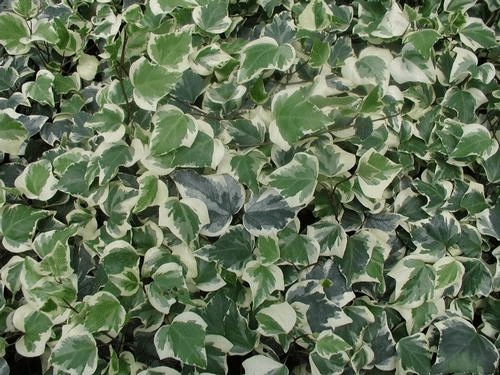
Identifying Glorie de Marengo
Gloire de Marengo Ivy (Hedera algeriensis ‘Gloire de Marengo') is a cultivar of the evergreen ivy species Hedera algeriensis. It is named after the Battle of Marengo in Italy. This ivy variety is cherished for its attractive variegated foliage.
The leaves of Gloire de Marengo Ivy are large, leathery, and have a striking variegation pattern. They are typically dark green with creamy white or silver margins and veins. The variegation adds a touch of elegance and visual interest to gardens and landscapes.
Gloire de Marengo Ivy is primarily grown as a climbing vine or ground cover. It thrives in growing zones 7-10 and prefers partial shade to full sun. It is a vigorous grower and can quickly cover walls, fences, or arbors. Regular pruning helps maintain its desired shape and prevent overgrowth. Gloire de Marengo Ivy is a popular choice for adding a touch of sophistication and beauty to outdoor spaces.
Swedish Ivy
At a Glance
Botanical Name: Piectranthus verticillatus
Color: Green
Growing Zone: 10-11
Type: Trailing/indoor plant
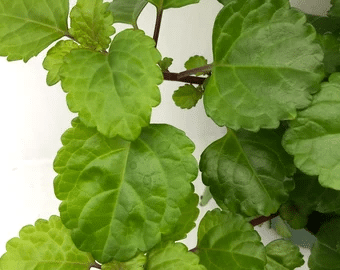
Identifying Swedish Ivy
Swedish Ivy (Plectranthus verticillatus) is a charming trailing plant native to Southern Africa. Despite its common name, Swedish Ivy is not a true ivy but belongs to the mint family (Lamiaceae). It features small, rounded leaves that are slightly fuzzy and have scalloped edges. The leaves are typically bright green but can vary in color depending on the cultivar.
Swedish Ivy is well-suited for hanging baskets, window boxes, or as a ground cover in gardens. It thrives in both indoor and outdoor settings, preferring bright indirect light and well-drained soil. This plant is known for its low-maintenance nature and ability to tolerate occasional neglect.
Swedish Ivy can be easily propagated by stem cuttings, making it a popular choice among plant enthusiasts. With regular pruning, it can maintain a compact and bushy appearance. Its trailing growth habit and attractive foliage make Swedish Ivy a delightful addition to any indoor or outdoor space.
Iberian Ivy
At a Glance
Botanical Name: Hedera iberica
Color: Dark green
Growing Zone: 6-9
Type: Climbing
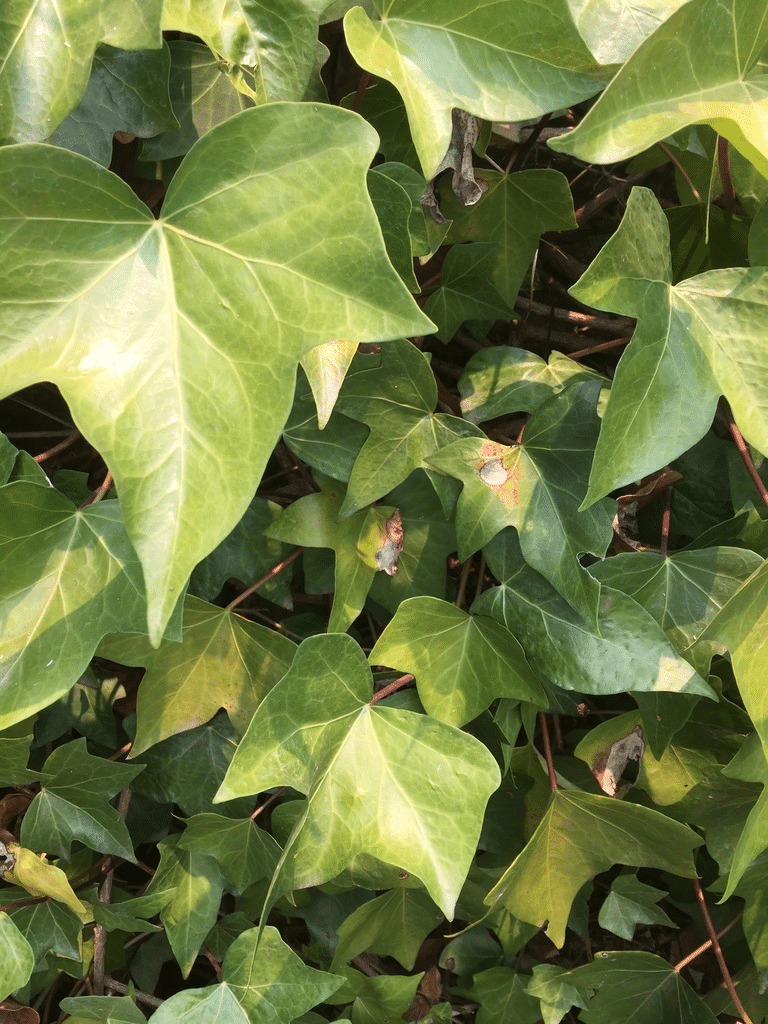
Identifying Iberian Ivy
Iberian Ivy (Hedera iberica) is an evergreen ivy species native to the Iberian Peninsula in Europe. It is a climbing vine that is highly valued for its attractive foliage. The leaves of Iberian Ivy are typically dark green, glossy, and have three to five lobes. They are smaller and more compact compared to other ivy species.
Iberian Ivy is known for its vigorous growth and ability to cover walls, trellises, or other structures. It is well-suited for both indoor and outdoor cultivation. This ivy species thrives in growing zones 6-9 and prefers partial shade to full sun. Regular pruning helps maintain its desired shape and control its growth. Iberian Ivy adds a touch of greenery and a lush, cascading effect to gardens, landscapes, and indoor spaces.
In Conclusion
In conclusion, ivy plants offer a diverse range of species and cultivars that bring beauty and versatility to both indoor and outdoor spaces. From the popular English Ivy with its classic lobed leaves to the unique and ornamental varieties like Manda's Crested Ivy, there is an ivy plant to suit every taste and preference.
One of the remarkable aspects of ivy is its ability to adapt to various growing conditions. Whether you're looking for a climbing vine to cover a wall or a trailing ground cover to add texture to your garden, ivy offers options for different purposes and landscapes. With their lush foliage and climbing nature, ivy plants can transform bare walls into living green tapestries and create a cozy, natural atmosphere.
Ivy is not only prized for its aesthetic appeal but also for its beneficial properties. Ivy plants help to purify the air by filtering pollutants and releasing oxygen, making them an excellent choice for indoor environments. Additionally, their dense growth provides excellent coverage, aiding in erosion control and acting as a habitat for beneficial wildlife.
Frequently Asked Questions
What ivy is the most hardy?
Hedera helix ‘Thorndale’ is considered the hardiest of the Ivy family.
What ivy stays green all year?
English Ivy is a type of ivy that stays green all year long.
How do I identify an ivy plant?
The best way to identify ivy is to look at the leaves and observe its growth habits.
What kind of ivy is a housplant?
English Ivy and Algerian Ivy are two of the most popular houseplant ivy.

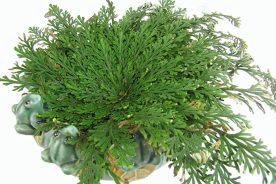
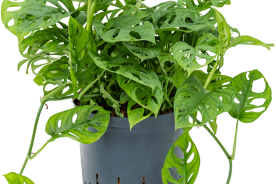
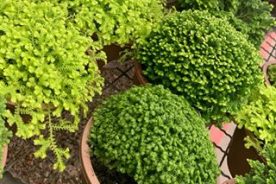

No Comments